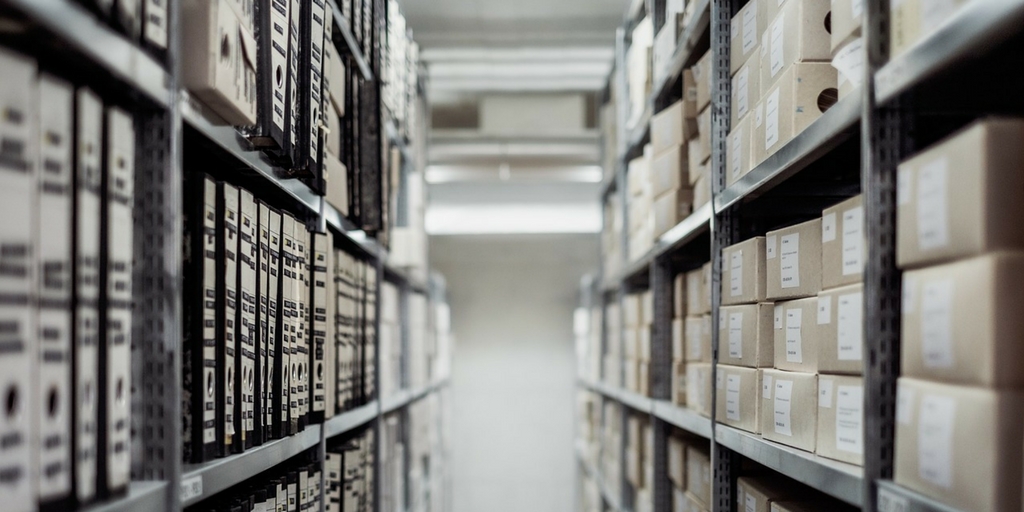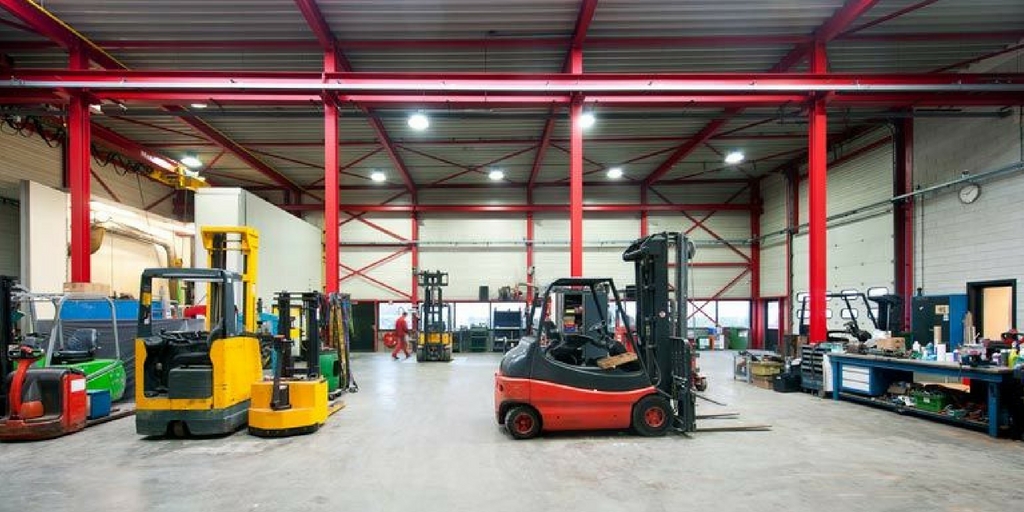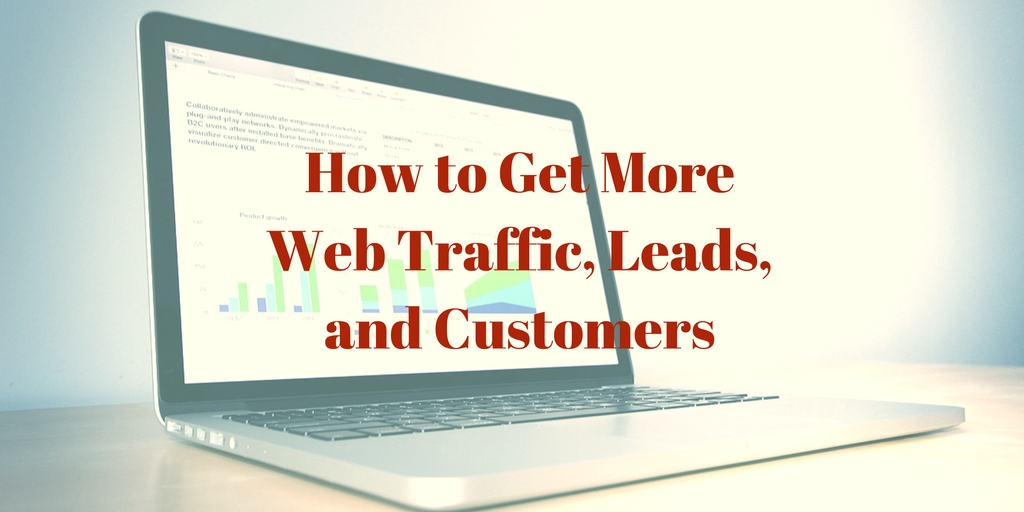
by Jennifer Hart Yim | Dec 6, 2016 | Big Data, Blog, Data/Analytics, Leadership, Logistics, Strategy, Supply Chain, Transportation & Trucking, Warehousing & Materials Handling
Supply chain leaders must be ready to implement big data in order to continuously improve.
This guest post comes to us from Adam Robinson, director of marketing for Cerasis, a top freight logistics company and truckload freight broker.
Supply chain leaders are enthralled with the idea of using big data, but they tend to fail to understand how to disseminate big data in their organization properly. True, they may know how to roll out big data in a single warehouse, or they may have heard their competitors used branded systems for implementing this new technology. However, the fundamental problem remains.
Supply chain leaders must be ready to implement big data and leverage it to improve their companies without any delay or inhibition. This may sound impossible and frightening, but they must only understand how big data always goes back to these two, simple principles of measurement: review and action.
Ask traditional questions, and let big data provide answers.
The most common complaint of newer companies using big data analytics capabilities tends to revolve around traditional questions of business strategy. Consider the following elements explains John Richardson of Inbound Logistics, that impact business strategy.
- Increasing order efficiency.
- Demand forecasts.
- The quantity of each product.
- Inventory location and management.
- Raw material suppliers and logistics.
- Transportation modes used in procurement and shipping.
- Distribution of goods prior to purchase.
- Demand fluctuations.
Each of these elements more traditionally handles by outsourcing analysis of processes to supply chain consultant. This is actually where the concept of third-party logistics providers involved. However, rapid growth and diversification of products are making shippers, manufacturers, and suppliers rethink their business strategy. In other words, consumers can get practically anything they want at a moment’s notice, and more consumers are expressing a willingness to wait for a product a few days if free shipping is a possibility. So, this need to adapt operations reflects the common concerns of traditional customers and supply chain entities. However, there is a distinction.
Previously, these entities only needed to focus on their local demographic for ensuring continued stability. But the rise of the internet has given consumers and everyone else the ability to access any product from any seller and any place on the globe. This is a traditional business strategy, and it is essential that the modern supply chain is willing to use big data all operations to create a more positive result than consumers, stakeholders or government organization ever needed before.
Performance measurement and management.
As explained in a previous blog post, continuous improvement in an organization can be achieved through the use of performance measurement tools via big data. Mostly, this reflects the skills and actual working capacity of employees. Since employees represent one of the largest expenses an organization may face.
Having the best staff members available can mean the difference between success or failure in a company. Furthermore, big data can help employees understand what they do and do not need to do in order to improve their performance scores. This will also help to prevent oversight from managers and keep all employees on track to complete their responsibilities as assigned.
Performance measurement does not have to be limited to the performance of employees either. It can be expanded to identify poorly performing machines, or it can be used to isolate inefficiencies in collaboration with suppliers or vendors. Ultimately, performance measurement is a metaphor for tracking any metric in the course of the supply chain, but it’s key to being effective is found in transferring the insights gleaned from big data into actionable results.
For example the operational efficiency of a given loading is directly related to how quickly pickers are able to fulfill orders and move them onto the dock. Obviously trucks can only be loaded so fast; what is the number of pickers appropriate for the current workload, or which route through the factory is adding an extra 20 minutes to each worker’s duties?
These questions illustrate that the most insignificant details can be driving forces of inefficiency in the supply chain. But they represent opportunities for continuous improvement. Changes in the design or layout of the warehouse or alterations to the truck schedule may require changing the duties of a certain worker at a moment’s notice. Essentially, the worker must be able to access continuous data measurements on all factors affecting his or her responsibilities.
Supply chain leaders need to focus on continuous improvement.
Continuous improvement is a complex notion. It is based on hundreds, if not hundreds of thousands, of individual metrics from various collection points and analyzed in real time. All of this reflects a very large volume of data. It can be digested and broken down into usable bits, much like the biological processes of the stomach making it essential to surviving the coming season.
This comparison is much more than a metaphor; it is the real issue being faced by supply chain entities and their leaders. Supply chain leaders must use big data to gather insight and create quantifiable measures of performance and functionality across their enterprises on a recurring, frequent and immediate basis.
Related posts:

by Elizabeth Hines | Nov 23, 2016 | Blog, Strategy, Supply Chain, Warehousing & Materials Handling
The evolution of driverless robotic vehicles continues unabated. But what will it take for them to overtake certain warehouse tasks?
A lucky few have already experienced it — the thrill of taking their hands off the steering wheel and letting the car take care of the driving. As a reporter from the Guardian rode in the driver’s seat of a multi-million euro research vehicle “Jack” by Audi on the autobahn, she observed it carried out maneuvers so smoothly “it felt like the car was participating in a courtly dance with others on the road.”
Despite such glowing reviews and the unabated evolution of driverless vehicles, Jack and many its counterparts will not be available for mass consumption for another decade or so.
AGVs and today’s warehouse
In the world of material handling, the notion of driverless has been around for 60 years since the first Automated Guided Vehicle (AGV) appeared in a grocery warehouse. High-tech warehouse operations are already used to the sight of AGVs performing tasks, such as the vertical storage and retrieval of pallets and the loading and unloading of pallets onto outbound trailers.
Driverless robotic vehicles, on the other hand, have generally been assigned to low complexity and repetitive horizontal movement of materials, as well as assisted order picking that involves a high degree of machine and human interaction. Although it may sometimes sound as if driverless vehicles are about to phase out forklift drivers altogether, Toyota Material Handling, which has developed an Autopilot AGV driverless forklift range, notes in a blog post that “there is still value in human operators in an automated warehouse. Human operators are far more capable of identifying issues in the immediate environment and any problems with picking orders. The role of the human operator in an automated warehouse will be more dynamic and varied as the ‘grunt work’ is now tasked to the automated system.”
This argument echoes the challenge that makers of driverless automobiles have expressed: In order for the technology to reach the next level of effectiveness, it has to assume “human” qualities. While the driverless car comes to a complete stop at the sight of a yellow light, the human driver is more likely to speed up to beat the red light, a fact that has been blamed for a number of collisions during testing of a Google autonomous vehicle prototype.
The potential of driverless vehicles
That being said, driverless robotic vehicles hold enormous potential. In an interesting webcast on DC Velocity — which addresses the technology’s role in distribution operations that include horizontal transport and full-case picking applications — two experts tout ROI and productivity gains.
DC Velocity Senior Editor David Maloney and Marc Wulfraat, president of global supply chain and logistics consulting firm MWPVL International, estimate a three-year ROI is possible and that 20-25% productivity gains for order picking are realistic, as long as certain obstacles are overcome. For example, old legacy applications rarely integrate well with newer real-time technologies. If the two are forced together, it may happen at the expense of speedy processes, thus negating the effect of why the driverless technology was introduced in the first place.
Maloney and Wulfraat explain: “In high-density full-case picking environments (e.g., grocery distribution), an order selector can pick 175 – 200 cases/hr or one case every 18 – 20 seconds. If a 5-second delay due to system latency is introduced, then this would result in a major decrease (19 – 24%) in order selection productivity to 141 – 157 cases/hr. In a facility shipping 1 million cases/week with labor cost of $23/hour fully loaded, this would add around $1.6 M of warehouse labor expense to the operation. Clearly, this type of technology cannot add any system latency, which suppliers are working hard to guarantee.”
Another challenge arises when multiple vehicles have to pass within the same operating aisle. Considering the minimum clearance that it takes for a robotic vehicle to pass another without safety sensors bringing it to a halt could pose a problem in distribution centers with narrow aisle widths.
Still, in the big scheme such challenges pale in comparison to how far the technology has already come. When it comes to automating the horizontal transfer of products in a warehouse or distribution center, driverless robotic vehicles are undoubtedly the answer.
What do you consider to be the main challenges to full-scale adoption of driverless robotic vehicles in the warehouse or DC?
This article originally appeared on EBN Online.
Related posts:

by Fronetics | Nov 14, 2016 | Blog, Content Marketing, Logistics, Manufacturing & Distribution, Marketing, Social Media, Supply Chain, Transportation & Trucking, Warehousing & Materials Handling
Fronetics is conducting a survey to determine the benefits and challenges of social media for companies in these industries.
Two years ago, Fronetics surveyed a number of individuals working in the logistics and supply chain industries, including those employed by manufacturing, warehousing, and transportation companies. The survey’s goal was to find out how these companies were using social media, and if they were realizing any benefits or encountering any challenges by participating.
Interestingly, 100% of respondents reported having used social media for 5 years or less. Despite this relatively short implementation period, the majority (68%) said that their companies had already realized benefits from participation — primarily increased engagement with customers, increased market intelligence, and increased business intelligence.
As things go in the technology space these days, social media looks quite different than it did two years ago. What’s more, companies in these industries have, presumably, been using these tools for longer. Have a better understanding of social platforms and more opportunities for businesses impacted the benefit to users?
Fronentics is conducting a new survey to find out. We invite individuals working in the warehousing, manufacturing, and transportation industries — or those in other supply chain and logistics fields — to participate.
The survey takes about 3 minutes to complete. Responses will be reported in aggregate, and no identifiable information (individual or company) will be shared.
We look forward to hearing about your experience with social media!

Related posts:

by Fronetics | Oct 20, 2016 | Big Data, Blog, Data/Analytics, Logistics, Manufacturing & Distribution, Strategy, Supply Chain, Warehousing & Materials Handling
These industry leaders are leveraging insights from big data to solve business problems and drive profitable customer action.
Big data is more than just a buzzword: It’s helping companies make big-impact business decisions based on customer behaviors, purchasing patterns, and preferences.
Not all organizations have the resources to invest in big data. But for those that do, the payoff can big significant. The trick, of course, is knowing which numbers to analyze, what can be predicted, how to use big data for your particular business needs.
Let’s look at five big brands that are leveraging big data successfully to drive profitable customer action.
How 5 big brands use big data
1. Amazon
Amazon’s free same-day delivery service, Prime Now, allows Prime members to shop for over 25,000 products that can be delivered to their doorsteps within two hours. How can Amazon accurately predict the specific wants of millions of people across the country at a given time to prepare local inventory for immediate delivery? Aside from efficient warehousing and logistics, the company uses data on purchase history to optimally locate and stock its warehouses. This strategy also helps to reduce the time inventory stays in stock, diminishing working capital requirement.
2. Starbucks
Have you ever wondered how two neighborhood Starbucks locations can both stay in business? The company examines data on local traffic, demographics, and customers to determine the potential success of a new location before expanding. Starbucks can then choose to open a new store where it would be most successful, even if it’s just a few blocks from one of their other locations.
3. Walmart
In preparation for Hurricane Sandy, Walmart analyzed historical sales data before expected inclement weather and found an uptick in sales of flashlights, emergency equipment, and — to everyone’s surprise — strawberry Pop-Tarts in several locations. The company has since leveraged timely analysis of real-time data to drive business performance. As Walmart Senior Statistical Analyst Naveen Peddamail told Forbes: “If you can’t get insights until you’ve analysed your sales for a week or a month, then you’ve lost sales within that time. Our goal is always to get information to our business partners as fast as we can, so they can take action and cut down the turnaround time. It is proactive and reactive analytics.”
4. Rolls-Royce
Rolls-Royce has implemented big data processes in three key areas of their operations: design, manufacture, and after-sales support. Each design simulation for one of their jet engines, for example, generates tens of terabytes of data, which computer systems analyze to determine the viability of the design. The company’s manufacturing systems are increasingly moving toward a networked, Internet of Things (IoT) industrial environment. And after-sales support is completely changed by big-data analysis. Expert engineers continually examine real-time analysis from sensors fitted to all Rolls-Royce engines and propulsion systems to diagnose faults and mitigate issues.
5. Capital One
Big data helps Capital One determine the optimal times to send particular customers certain offers. The team analyzes demographic data and spending habits of their customers to optimize their offerings, which has increased conversion rates on their offers and generated more leads from their marketing budget.
How does your business use big data?
Related posts:

by Fronetics | Sep 29, 2016 | Blog, Content Marketing, Logistics, Manufacturing & Distribution, Marketing, Strategy, Supply Chain, Warehousing & Materials Handling
Content marketing can help your organization amplify its efforts to drive traffic, improve conversion rates, and increase sales.
A recent survey of over 4,500 marketers at organizations around the globe found that converting leads to customers (74%) and growing traffic to their websites (57%) were their companies’ top marketing priorities. Perhaps not surprisingly, these marketers also overwhelmingly reported that generating traffic and leads was their top challenge. Often our business priorities are the most difficult to achieve.
Enter, content marketing.
Content marketing is a form of inbound marketing in which businesses publish content to attract prospects who are interested in products in services like theirs. This marketing approach can be highly effective in growing brand awareness, generating leads, and increasing sales. In fact, according to the same survey, organizations using inbound marketing were four times more likely to rate their marketing strategy highly than outbound organizations.
Let’s look at one example from the warehousing sector.
Business was decent for Company X. It had experienced positive growth for over a decade, despite lacking a clear marketing strategy. But leadership started to wonder: Are we missing opportunities for growth?
Company X sought a multi-level digital marketing strategy that would help them increase web traffic, generate more leads, and convert prospects to customers. The team hired Fronetics to create and implement such a strategy.
After 24 months, the results were telling: Web traffic increased by nearly one-fifth (19%). Company X tracked 244 high-quality leads directly sourced from its new content marketing efforts. And new business grew by a remarkable 30%.
Content marketing was highly successful for Company X in achieving its business goals of driving traffic and new business. In fact, the organization realized many other positive benefits as well. You can read about more of them, as well as the strategy Fronetics used to get there, by downloading the case study below.

Want to increase traffic to your business’ website and generate more leads and customers? Have you tried content marketing? Here are a few resources to get you started.
Related resources:
Need more help? Contact Fronetics to request a free strategy session.

by Fronetics | Sep 20, 2016 | Blog, Content Marketing, Logistics, Manufacturing & Distribution, Marketing, Strategy, Supply Chain, Warehousing & Materials Handling
A content marketing strategy helped one organization generate leads, increase web traffic, and drive sales and new business.
Why would my company blog? Do we really need to be on social media? What is a white paper, and who would read one that I wrote?
These are questions that many businesses in the manufacturing and warehousing space might ask. They don’t see or understand how they might benefit from content marketing.
TotalTrax might have asked the same sorts of questions several years ago. The company, which provides tracking technologies for manufacturing and warehouse operations, had experienced positive year-over-year growth for a decade. The website got decent traffic. Yet, there was a sense that there were many untapped opportunities for growth.
TotalTrax hired Fronetics Strategic Advisors to create and implement a content marketing plan to maximize the company’s digital presence. TotalTrax wanted to see results in the form of increased web traffic, new and better leads, and revenue. Fast forward 24 months, and that’s exactly what happened.
Content helped TotalTrax to achieve:
- 19% increase in overall web traffic
- 500% increase in traffic from social media
- 244 high-quality leads
- 30% net increase in new customers
- 10% growth in sales revenue
To learn more about how Fronetics helped TotalTrax maximize results from a digital and content marketing program, download our case study below.

Related posts:








